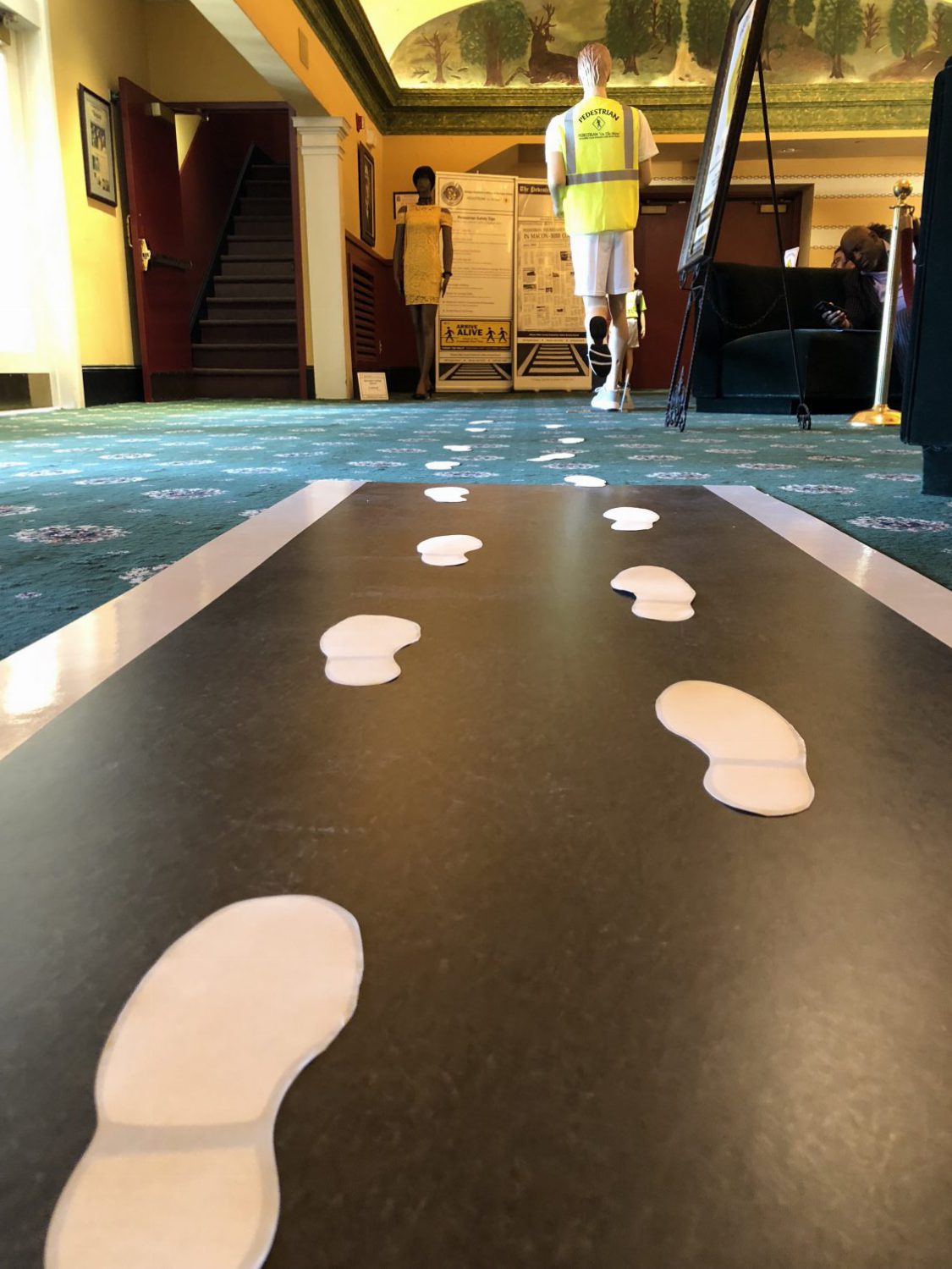Can Your Wardrobe Really Keep You Safe While Walking?
If you want to survive getting hit by a car while you’re walking, should you start by rethinking what you’re wearing?
At least that’s the question that Macon-Bibb County, Georgia seems to want residents to ask. Because on September 27th, their Pedestrian Fatality Review Board (PFRB) capped off their “On the Move” campaign with a summit that included something Strong Towns advocates might find a little outrageous: a fashion show designed “to encourage pedestrians to dress in clothing which can be easily visible by drivers and passengers,” according to a recent press release.
Via MaconBibb.us.
While images of the event are, sadly, not readily available, it’s not hard to imagine the parade of baggage-handler vests and day-glo dresses. That’s because Macon-Bibb is far from the first place to insinuate that reflectors and neon are an important ingredient to pedestrian safety. Some cities have even put laws on the books prohibiting people from wearing dark clothing while walking at night: the community of Ville Platte, LA made headlines last year when three pedestrians who were struck by a vehicle on a sidewalk-less road were fined by the city for not wearing reflective clothing. The driver who hit them was not charged.
But for Macon-Bibb resident and Strong Towns reader, Lee Martin, the fact that the PFRB’s fashion show is not a complete anomaly doesn’t make it any less upsetting. “Once again, the board is criminalizing the person walking by placing the blame and burden, not where it belongs on our dangerous roads, but on the victims themselves, and that’s just plain wrong,” Martin said in a recent letter to the editor published in the Macon Telegraph. “Every professional urban planning and pedestrian/bicycle safety study that I have read prioritizes infrastructure improvements, not educating the pedestrian. The Insurance Institute of Highway Safety says this: ‘Education programs generally have not been effective in reducing pedestrian crashes.’”
Martin is particularly upset that the $20,785 grant that funded the education sessions, provided by the Governor's Office of Highway Safety, was not better spent on small, easily iterated infrastructure improvements. “That $20,000.00+ would have gone a long way to buying paint for narrowing street lanes, and improving our street infrastructure for cars, people walking, and bicyclists,” Martin said in an email to Strong Towns. “But for a ‘fashion show’? Give me a break!”
What’s particularly confusing about Macon-Bibb’s decision to host the fashion show is that local officials seem to understand that dressing pedestrians up like human traffic cones won’t really do much to save lives. In a recent article for the Macon Telegraph, Brad Belo of the Macon-Bibb Planning and Zoning Commission acknowledged that only 13 percent of Bibb County’s 1,200 road miles have sidewalks, and that on the deadliest thoroughfares like Gray Highway, pedestrian crosswalks are placed average of 2,400 feet apart. “You can understand why people aren’t crossing in crosswalks,” Belo told the paper. He also reportedly acknowledged that actually decreasing pedestrian fatalities would likely be mostly a matter of slowing down car traffic (rather, one would assume, than putting walkers in Technicolor,) and that comparatively low-cost interventions like “building roundabouts at intersections and constructing narrower lanes and pedestrian islands in the median have been shown to reduce speeding and serious injury.”
Even more encouragingly, in the same article Katelyn DiGioia of the Georgia Department of Transportation was quoted discouraging GA residents from buying into the flipside of the myth that walkers can usually save their own lives just by changing their behavior: the equally pernicious myth that there’s no way they can survive until their communities shell out for the most expensive ped-specific infrastructure available. “Pedestrian bridges are kind of like a Band-Aid,” DiGioia said. “They’re not fixing the underlying problem.”
And yet despite having these voices around the table, Macon-Bibb county still pushed on with this event, and sent a message to local residents that hi-viz pedestrian style is on par with real, substantial improvements to a built environment that guarantees that cars will travel at high speeds in places where people are walking.
Strong Towns has a long record of being a little more radical than most of our peers when it comes to the question of who’s really responsible for pedestrian safety—and we think the people who over-build our roads deserve far more of the blame than they get. Our president, Chuck Marohn, even agreed to offer expert testimony in the case of an Oregon woman who died crossing a stroad on foot while she was intoxicated and was hit by a car. Chuck argued that even an intoxicated person could and should survive such a crash, and that this particular woman would be alive today if the Department of Transportation had used design to slow down cars on every street where we expect pedestrians to walk. “"So why can't [the DOT] do it?" Marohn asked. "Because nobody cares. These people can write manuals, they can write plans, they can do all this... but they're not putting it into effect. And for the cost of these studies, they could've fixed this street a hundred times over."
For the cost of a “pedestrian fashion show,” Macon-Bibb could have implemented a simple, low-cost intervention on a real street that almost certainly would have saved lives. At Strong Towns, we believe that good street design forgives basic pedestrian mistakes rather than making the failure to wear a reflector a capital offense; let’s hope that next time, Macon-Bibb stops devoting any of our precious dollars and hours to dubious “pedestrian education” schemes that won’t save potential victims of traffic violence, and start doing something that we know works: building stronger places.
Top photo via Tree Hugger/Chanel.











If cities strive to meet the basic physiological human need to move our bodies, they may be pleasantly surprised at how everything else just falls into place.